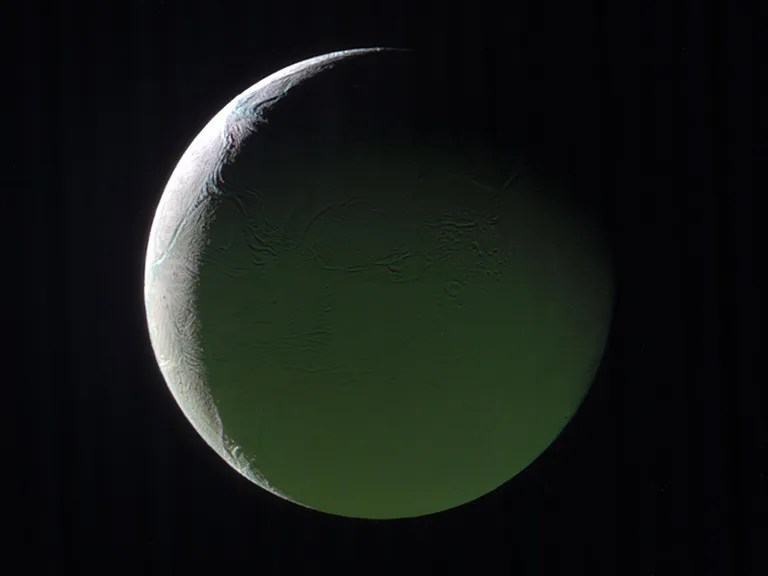3 min read

Wednesday, Sept. 20
Cassini’s Deputy Project Scientist presented the opening, invited talk in a series of Cassini sessions at the European Planetary Sciences Congress in Riga, Latvia. Several sessions this week were devoted to the major science disciplines for which Cassini's instruments and investigations supplied data. Cassini’s European participants presented the majority of the talks. The Congress was attended by 808 participants from 40 countries.
Saturn is very well placed in the evening sky these days, available for anyone to view with any sort of telescope. Its rings are wide-open as they face Earth, offering a fine opportunity to examine them. Saturn's moon Titan is easily seen too, and others may be visible as well, depending on the optics used and the viewing conditions. While viewing, it may be interesting to contemplate that this most distant of the wandering lights known to our ancient ancestors now contains 2,215 kilograms of matter from Earth thanks to Cassini.
JPL's "What's up" includes instructions for locating Saturn in the sky:
.
Monday, Sept. 25
This image of Saturn's tiny, active moon Enceladus was featured on the Cassini website today:
.
Tuesday, Sept. 26
NASA selected an image of Saturn as the Astronomy Picture of the Day. This beautiful mosaic was assembled by a citizen scientist from 36 images that Cassini acquired a few days before the mission's end, when the spacecraft was out near the apoapsis of its final orbit:
. (The Cassini imaging team plans to release a processed version of this last view of the planet in a couple of months.)
Cassini's scientists and engineers have received high-quality data about Saturn's atmosphere, based on returns from the Grand Finale atmospheric entry on Sept. 15. Even though Cassini was never designed to play the role of an atmospheric probe, it captured data from several sources, including radiometric data (the Doppler shift and range data used for navigation), Radio Science occultation and gravity measurements, as well as telemetry from Cassini's in-situ, direct-sensing science instruments. The telemetry returned from the spacecraft's on-board attitude control system, as it was reacting to the atmospheric forces during entry, will also be useful in analyzing the data. After rigorous work, results are expected to be published in the peer-reviewed scientific literature by early next year, and by extension will appear in the popular media.
------------------------
This page offers all the details of the Mission's ending: <https://saturn.jpl.nasa.gov/mission/grand-finale/overview/>
------------------------
Milestones spanning the whole orbital tour are listed here:
<https://saturn.jpl.nasa.gov/mission/saturn-tour/tour-dates/>
------------------------
To unsubscribe from Cassini Spacecraft Updates or to subscribe with a different email address, visit:
<http://saturn.jpl.nasa.gov/news/mailinglistsignup/>
------------------------
For comments and questions, please contact Cassini Public Engagement at:
<http://saturn.jpl.nasa.gov/feedback/>
------------------------







